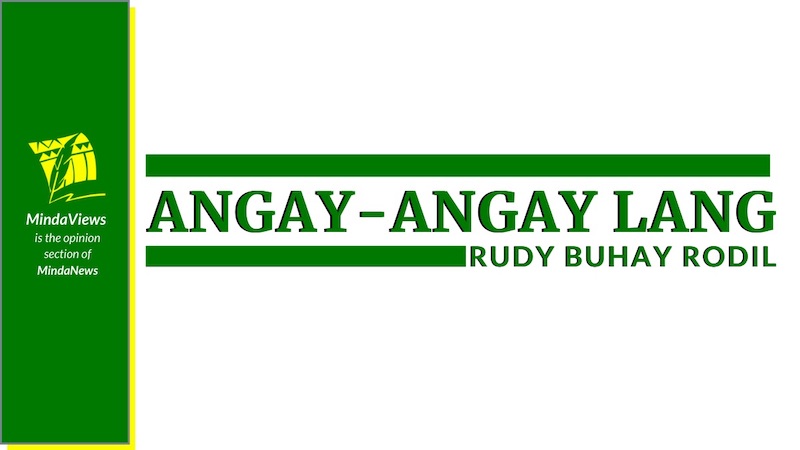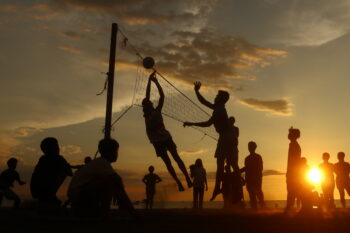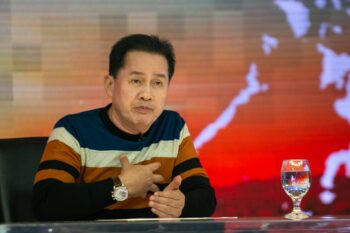 Part 3 of 7: Value of the RCC-MM as a Political Process
Part 3 of 7: Value of the RCC-MM as a Political Process
ILIGAN CITY (MindaNews / 8 October) – As a political process the RCC-MM was a first in modern Philippine political life. To put it in proper perspective, however, it must be seen not only as a first but, perhaps, most especially as a part of a bigger political exercise.
From the time President Marcos consented to negotiate with the MNLF through the mediation of the Organization of Islamic Conference, more specifically the Quadripartite Commission which it created to attend to the Bangsamoro problem, up to the continuation of the same process in the Aquino administration, one will immediately see the bilateral character of the talks.
At the same time, one will also notice a consistent failure of the two parties to agree. The provisions of the Tripoli Agreement and the Jeddah Accord will reveal, on closer examination, a failure to agree on substantive matters.
But a most basic weakness of the bilateral process is the exclusion of the millions of people whose very lives happen to be the subject of negotiations.
In the Tripoli agreement, for instance, the second provision refers to the 13 provinces and all cities and villages therein as the areas of autonomy “for the Muslims in the Southern Philippines.”
And yet, one look at the 1970 census will show that the Muslim population constitutes only one-fourth of the total in the areas enumerated.
What would happen to three-fourths of the inhabitants?
And what about the Lumad groups which are equally in need of autonomy?
In the Jeddah accord, both parties agreed “to continue discussion of the proposal for the grant of autonomy to Mindanao, Basilan, Sulu, Tawi-Tawi and Palawan subject to democratic processes.” If the exclusion of the rest of the population is noticeable in the first, it is even more so in the second.
And how were the areas of autonomy chosen? Why 23 provinces? Why not 20 or 15? Why 13 provinces? Why not 12 or 11? Unfortunately, no negotiation documents have so far revealed any close scrutiny or discussion on the basis for selection of provinces and cities for the autonomy.
Just to emphasize the obvious, why where the two Zamboanga provinces and the province of Davao del Sur included in the Tripoli agreement?
Apparently, it never occurred to anyone to inquire from the Lumad groups whether it was they or the Muslims who have been numerically dominant in these areas.
The introduction of the Regional Consultative Commission in the Constitution and the specific instructions of R.A. 6649 for the commission to conduct public consultations constitute a radical departure from the bilateral approach.
As interpreted by the Office of the President and later confirmed in R.A. 6649 by Congress, each of the 27 congressional districts would be represented in the regional consultative commission, and these in turn were balanced with sectoral representatives.
And so, for the first time in Philippine modern political history, we have gathered together, representatives from Lumads, Muslims and Christians with a constitutional mandate to thresh out a modus vivendi among themselves in an autonomous region.
The public consultations they were bound by law to conduct prior to or as a pre-requisite to substantive deliberations further insured that popular sentiments would be heard and transmitted to the plenary deliberations.
Then from the RCC-MM, the work is passed to Congress for final enactment into law. As soon as the President signs the organic act into law, it is sent back to the people for judgment in a plebiscite.
The cycle from-the-people-to-the-people is completed.
The RCC-MM was in effect part of an entire cycle of a peacemaking process.
But then, people sympathetic to the MNLF would continue to object aloud: the Bangsamoro Fronts had no part in it, how can it be an instrument of peace? This question carries a mouthful of assumptions which are without solid foundations.
In the first place, there is the belief that the cause of lack of peace in the region are the Bangsamoro Fronts; for this reason, they are a necessary party to the restoration of peace. The existence of Muslim-Christian conflict within the area, specifically in Central Mindanao belies this.
Secondly, it is thought that the Fronts unquestionably speak for and in behalf of Bangsamoro inhabitants which by MNLF definition happens to include the Lumad population. Lumad groups generally refer to themselves as Lumad, Highlander, Tribal Filipinos, and the like depending on their orientation.
But seldom, if ever, do they call themselves Bangsamoro. Most often they use their ethnolinguistic names.
Finally, it is assumed that differences between the Fronts and the Government could be settled constitutionally. Although elements in the latter may claim to be so, it is more than obvious that whenever they meet at the negotiating table, they speak their own distinct languages over each other’s heads.
But how can anyone say the constitutional experiment was successful when the RCC-MM did not reach its goal, and whatever it finished was later supposedly mangled by Congress? And what Congress produced that was approved by the President was later soundly rejected by the majority of the voters during the plebiscite called for the purpose?
The equation seems logical enough. But there is a need to clarify a number of things.
First, the failure of the RCC-MM to attain its self-imposed goal is the ultimate result of a complex of issues that revolved around the controversy over “Muslim Mindanao.”
It certainly had a direct role in maneuvers of its advocates to delay and postpone deliberations on the name to the last minute. The tensions that were created in the process raised other complications.
There were also administrative matters, indecisions included, that hampered rather than facilitated deliberations both at the Committee and at Commission levels. Altogether, finally, the issues reflect the very social dynamics obtaining in the region among the Lumad, Muslims and Christians which the Commission as a whole cannot claim to have overcome.
The failure of the RCC-MM to achieve its goal of a completed draft organic act should not mean a total failure to undertake its principal task of assisting Congress in drafting the organic act.
There was much substance in the final report; the will and sentiments of the people were generally reflected in the provisions. After the Mindanao Affairs Committee in the Senate and the Local Government Committee in the House heard from the Commission, the bills for the organic act filed in both Houses were faithful reflections of what RCC-MM had accomplished.
What was left of the original final report when both Houses passed the act must be considered in light of additional factors like the constitutionality of certain provisions, the contradictions among the provisions and others which the RCC-MM did not resolve by themselves in the first place. Insertions in Congress where no RCC-MM-made provision existed cannot possibly be regarded as a case of mangling. But we shall have space below for some internal analysis of the organic act.
The so-called rejection by the majority of voters in the region which is equated as the rejection of the constitutional approach and the Cory solution is a case of static and simplistic quantification.
It has been known in the proposed area of autonomy by those scholars from a consortium of Mindanao universities who did a study in 1987 about the acceptability of autonomy and came out with the results in March 1988 that those in favor were generally the five Muslim-dominated provinces.
Participants in the public consultations have warned of the same result and these were those who advised that the RCC should stop wasting its time with places that do not want to be part of autonomy.
In short, those who were generally opposed to autonomy remained so from beginning to end; and those who were in favor remained in favor. There were no noticeable substantial deviations except in the latter with the no vote prevailing in Basilan and Marawi City.
And the reasons given in the study were substantially the same reasons repeated in the consultations and, later, in the information drive.
It was the Muslims who have fought for autonomy and it was naturally they who favor its establishment.
Non-Muslims, whether Christians or Lumad, were quite consistent in their perception that autonomy was for the Muslims and not for them. Put negatively, they say that they do not want to be dominated by the Muslims. One personal experience is worth recalling here.
One week before the November 19, 1989 plebiscite, I inquired from my four classes in History (History of the Moro people and the Lumad groups of Mindanao) whether they have heard of autonomy in Muslim Mindanao and the organic act and the plebiscite. They answered YES.
These students came from all over Mindanao. I also asked them if they wanted to have their place as part of the autonomous region. Ninety-four percent said NO.
Asked why, the most common reason given was they did not want to be dominated by the Muslims.
Then I gave them a copy each of the organic act and together we looked for provisions saying that Muslims would dominate the Christians. They found none, as indeed there was none.
Instead there were a number on equality. Also, the overall impression was that there was nothing in the act that would prejudice the Christians. There were also advantages for those which would become part of the autonomy.
Yet, when a second round of voting was done, the same ninety-four percent voted NO – obviously, responding by the heart, from all appearances.
Tomorrow: Judging the Product: Reviewing Certain Points in R.A. 6734 – An Act Providing for an Organic Act for the Autonomous Region in Muslim Mindanao
[Si Prof. Rudy Buhay Rodil ay aktibong historyan ng Mindanao, tagapasulong ng kalinaw (Bisaya sa kapayapaan). Kilala siyang espesyalista sa paghusay ng mga gusot sa Mindanao-Sulu. Naging Komisyoner noon ng Regional Consultative Commision sa siyang nagbuo ng draft organic law ng Autonomous Region in Muslim Mindanao noong 1988. Dalawang beses siyang naging miyembro ng GRP Peace Negotiating Panel. 1993-1996, pakikipag-usap sa Moro National Liberation (MNLF), at noong 2004-2008 sa pakikipag-negosasyon sa Moro Islamic Liberation Front (MILF). Naging visiting propesor sa Hiroshima University, Oktubre-Disyembre 2011. Nagretiro noong Oktubre 2007.]







